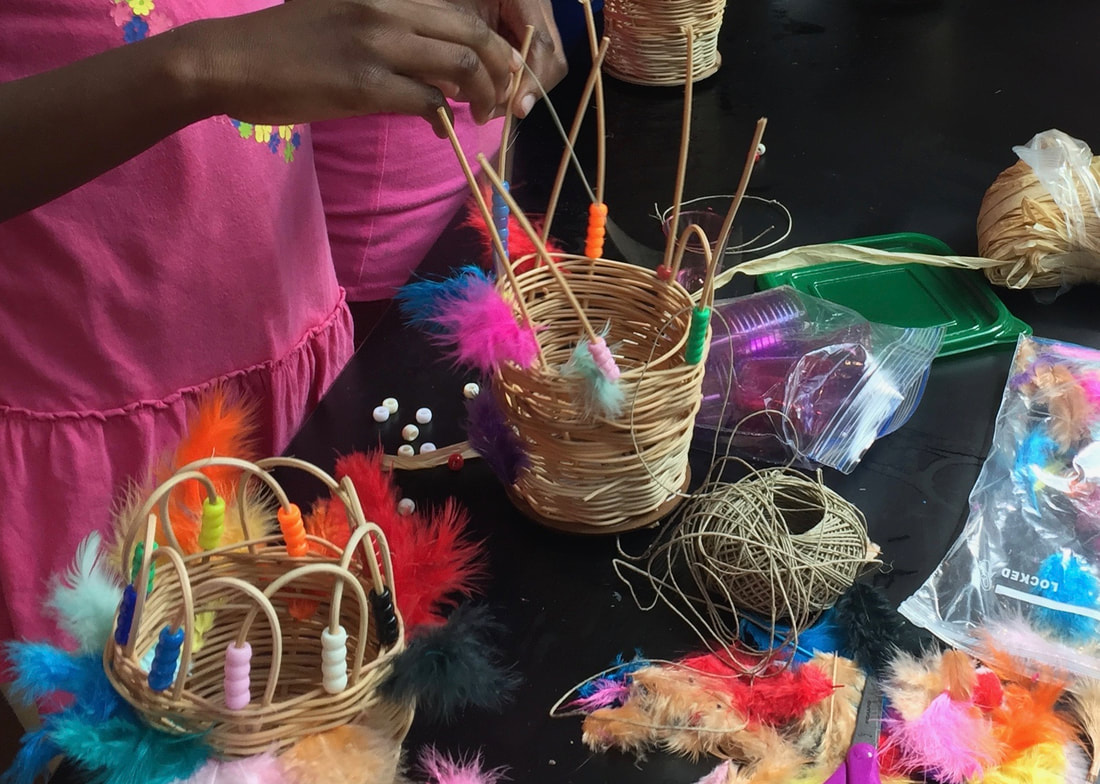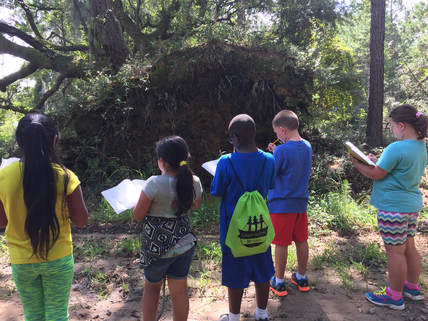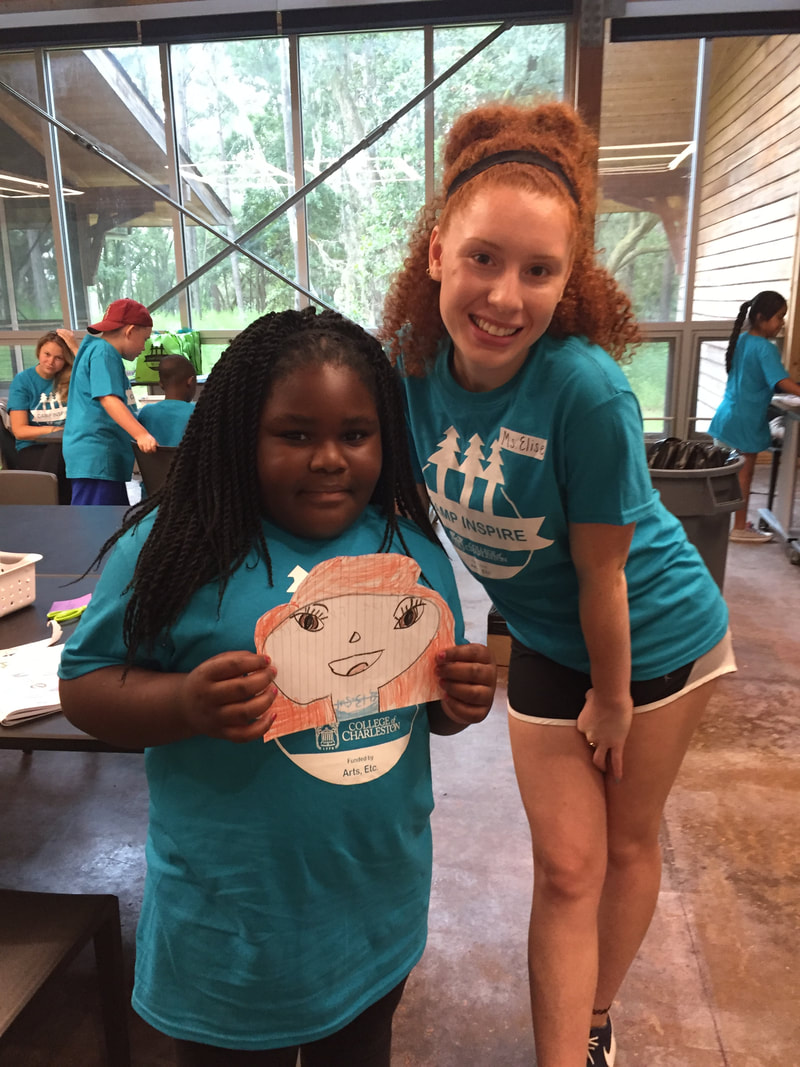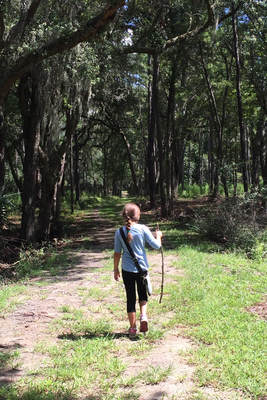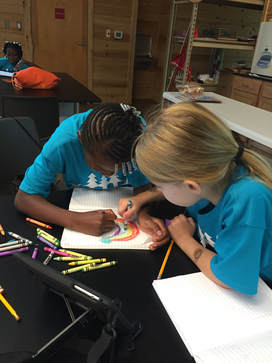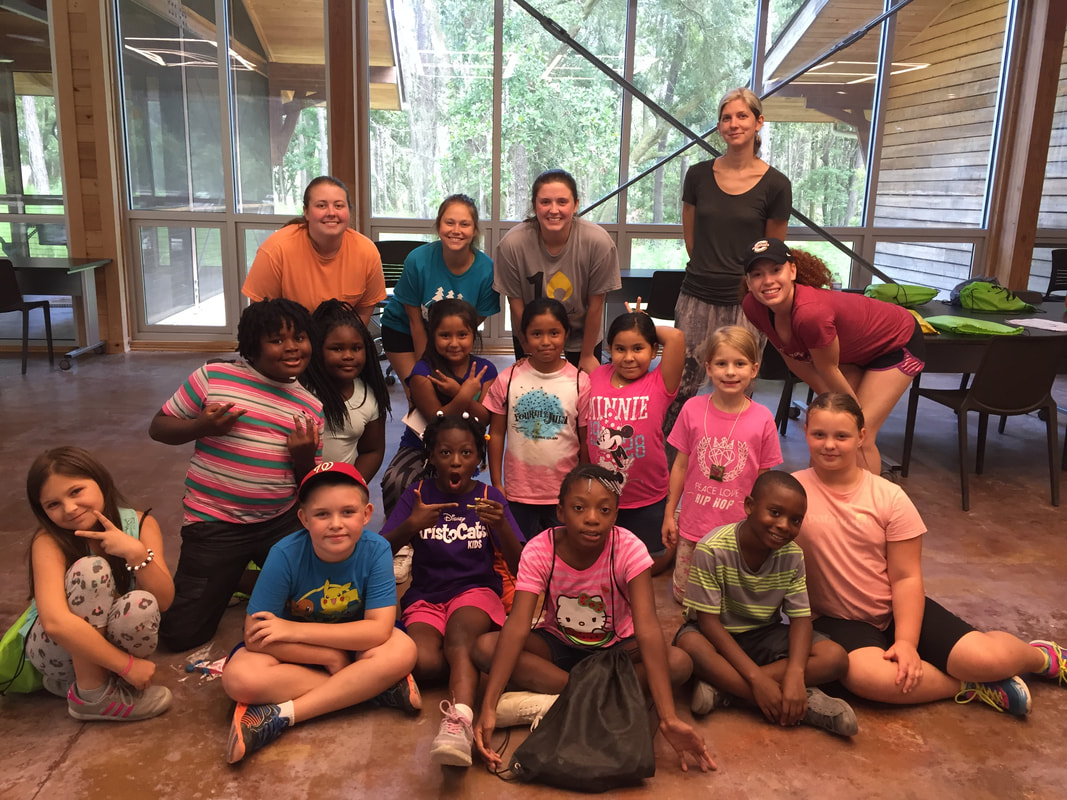What is Camp Inspire?
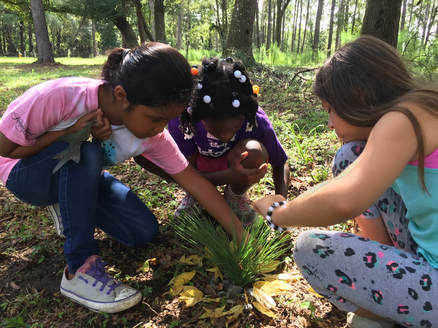
What's the idea?
Camp Inspire began as an idea based on the notion that connects learning subject areas in the STEM field with visual and performing art. The component of Camp Inspire that is different from other STEAM (science, technology, engineering, art and math) programs is that it is through full emersion in nature. These ideas are taken from the success of the Forest Schools found European countries like Germany and the Netherlands.
Camp Inspire began as an idea based on the notion that connects learning subject areas in the STEM field with visual and performing art. The component of Camp Inspire that is different from other STEAM (science, technology, engineering, art and math) programs is that it is through full emersion in nature. These ideas are taken from the success of the Forest Schools found European countries like Germany and the Netherlands.
- The pilot year of Inspire was a week long summer camp during the summer of 2017.
- This program successfully served twenty children from Angel Oak Elementary School.
- During the 2018-2019 school year Camp Inspire has created an educational outreach program as a field trip that brings children into nature to learn a variety of state standards including , science, ecology, math, visual and performing arts.
- This program aims to serve 200 children in three schools on Johns Island and Wadmalaw Island.

Child Centered Model: Inspired from the Reggio Emilia Approach to learning, and the Forest Kindergarten education style. In the morning, the afternoon activities would be explained and written on the whiteboard. During lunch children were allowed to take a sticky note with their name and place it by an activity that they wanted to explore. After lunch the students would go to the area they chose. After they thoroughly explored and recorded data, and answered questions in the field journal (see below), the children were allowed to make another choice and explore another area. Some children explored up to 3 areas in the 2 hour period, while others stayed fully occupied for the full time exploring, creating hypothesis, making sketches, creating, and learning through constructive play.
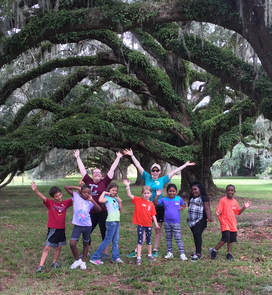
The Avenue of the Oaks
One of the most amazing things about the College of Charleston’s Dixie Plantation is the Avenue of Oaks. These trees once lined the entryway to the Plantation. Now they are a spectacle to view draw and investigate. The campers of Camp Inspire enjoyed the shade as they sketched their arches and discussed the history of the property and how the College uses Dixie for experiments and archeological digs.
One of the most amazing things about the College of Charleston’s Dixie Plantation is the Avenue of Oaks. These trees once lined the entryway to the Plantation. Now they are a spectacle to view draw and investigate. The campers of Camp Inspire enjoyed the shade as they sketched their arches and discussed the history of the property and how the College uses Dixie for experiments and archeological digs.
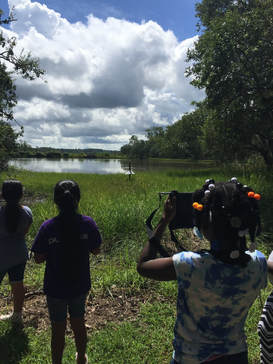
Landscape Photography
The beauty of the College of Charleston’s Dixie Plantation is endless, which is why the donor, John Henry Dick called it his “Eden.” It is a majestic 881-acre property along the Stono River and the Intercostal Waterway. The myriad ecosystems include long-leaf pine forests. Wetlands, savannahs, tidal marshes, as well as brackish, saltwater and freshwater ponds. The children had the opportunity to walk the grounds and photograph the dynamic landscapes. While on the journey that circumnavigated the property the children were taught skills in photograph, including how math is involved with framing images with the rule of thirds.
The beauty of the College of Charleston’s Dixie Plantation is endless, which is why the donor, John Henry Dick called it his “Eden.” It is a majestic 881-acre property along the Stono River and the Intercostal Waterway. The myriad ecosystems include long-leaf pine forests. Wetlands, savannahs, tidal marshes, as well as brackish, saltwater and freshwater ponds. The children had the opportunity to walk the grounds and photograph the dynamic landscapes. While on the journey that circumnavigated the property the children were taught skills in photograph, including how math is involved with framing images with the rule of thirds.
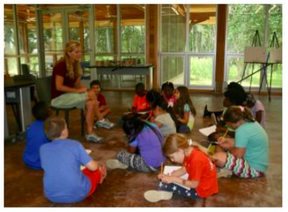
Children as Researchers
The Reggio Emilia Approach and Forest Kindergartens have the similar idea that children have valuable thoughts. They should contribute to the learning process. The concept that children are researchers was fully embraced as the campers were encouraged to ask questions and empowered to research the answer themselves and form their own hypothesis
The Reggio Emilia Approach and Forest Kindergartens have the similar idea that children have valuable thoughts. They should contribute to the learning process. The concept that children are researchers was fully embraced as the campers were encouraged to ask questions and empowered to research the answer themselves and form their own hypothesis
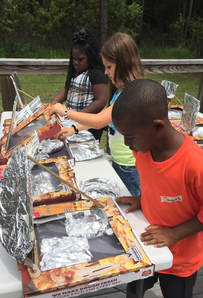
Solar Pizza Ovens
Heat and energy are two standards that are covered in the third grade. What better way to explore solar energy than with a self-made solar pizza oven. The campers created their ovens out of pizza boxes and experimented what angle towards the sun were better, the time that it would take to melt cheese on their pizzas. Combining science and the culinary arts was a big hit especially when they used the ovens to melt chocolate for homemade s’mores. All the delicious reward, without the smoke of a campfire.
Heat and energy are two standards that are covered in the third grade. What better way to explore solar energy than with a self-made solar pizza oven. The campers created their ovens out of pizza boxes and experimented what angle towards the sun were better, the time that it would take to melt cheese on their pizzas. Combining science and the culinary arts was a big hit especially when they used the ovens to melt chocolate for homemade s’mores. All the delicious reward, without the smoke of a campfire.
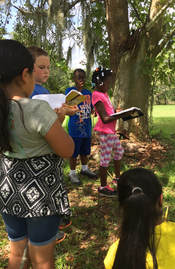
Researching & Sketching Nature
When scientists first came over to the colonies from Europe they needed to record the plants and animals that they found. They did not have cameras, so it was imperative that they were artists to convey the species that they found. While in the field scientists like Marc Catesby would sketch and make prints of what they saw when they explored. Camp Inspire children did they same. Here they are sketching a tree within a tree as they hypothesized how and why a tree would grow within another.
When scientists first came over to the colonies from Europe they needed to record the plants and animals that they found. They did not have cameras, so it was imperative that they were artists to convey the species that they found. While in the field scientists like Marc Catesby would sketch and make prints of what they saw when they explored. Camp Inspire children did they same. Here they are sketching a tree within a tree as they hypothesized how and why a tree would grow within another.
The Pilot Program:
Dr. Tracey Hunter-Doniger from the Teacher Education Department at the College of Charleston partnered with Arts Etc. and the College of Charleston Foundation to create a week-long pilot August 7-11 from 8:00 am to 3:30 pm. This camp provided an arts based-environmental program for grades 3-4 at the College of Charleston’s 864 acre Dixie Plantation. This program targeted the students from John’s Island and Wadmalaw areas from Title I schools. The week prior to the beginning of the school year (August 7-11) 20 children (rising 3rd and 4th grade children) attended a camp that is unlike any other. Inspired by the Forest Schools of Germany and Denmark children spent a majority of their time exploring on hiking trails and near the waterways of Dixie Plantation. Children of Forest Schools excel as they are encouraged to explore ideas through hands-on learning in nature. Additionally, as research demonstrates, children are innately drawn to the arts where they can express themselves and develop craft through hands on learning. These to concepts, exploring through nature and learning through art, were the basis for the curriculum of Camp Inspire. During camp, the children created art as they learn about science and ecology. They stretched and explored ideas that were interesting to them as they learned to reach beyond their capacity, free to explore playfully and embrace the opportunity to learn from mistakes.
Dr. Tracey Hunter-Doniger from the Teacher Education Department at the College of Charleston partnered with Arts Etc. and the College of Charleston Foundation to create a week-long pilot August 7-11 from 8:00 am to 3:30 pm. This camp provided an arts based-environmental program for grades 3-4 at the College of Charleston’s 864 acre Dixie Plantation. This program targeted the students from John’s Island and Wadmalaw areas from Title I schools. The week prior to the beginning of the school year (August 7-11) 20 children (rising 3rd and 4th grade children) attended a camp that is unlike any other. Inspired by the Forest Schools of Germany and Denmark children spent a majority of their time exploring on hiking trails and near the waterways of Dixie Plantation. Children of Forest Schools excel as they are encouraged to explore ideas through hands-on learning in nature. Additionally, as research demonstrates, children are innately drawn to the arts where they can express themselves and develop craft through hands on learning. These to concepts, exploring through nature and learning through art, were the basis for the curriculum of Camp Inspire. During camp, the children created art as they learn about science and ecology. They stretched and explored ideas that were interesting to them as they learned to reach beyond their capacity, free to explore playfully and embrace the opportunity to learn from mistakes.
Rationale: According to the National Summer Learning Association When the school year ends, children in high-poverty environments struggle not only with basic needs like healthy food and safe places to spend their days, but with losing precious time during the summer months to continue their learning. The cumulative effect is a crisis in the making: by the fifth grade, summer learning loss can leave low-income students two-and-a-half to three years behind their peers.
Students who fall behind over the summer are less likely to graduate from high school or go on to college. Diversity of every kind is critical to our nation’s success. Creating opportunities for summer learning sets the stage for innovation, creativity, and leadership in every community: the young people we nurture today are the foundation of our society tomorrow.
Students who fall behind over the summer are less likely to graduate from high school or go on to college. Diversity of every kind is critical to our nation’s success. Creating opportunities for summer learning sets the stage for innovation, creativity, and leadership in every community: the young people we nurture today are the foundation of our society tomorrow.
